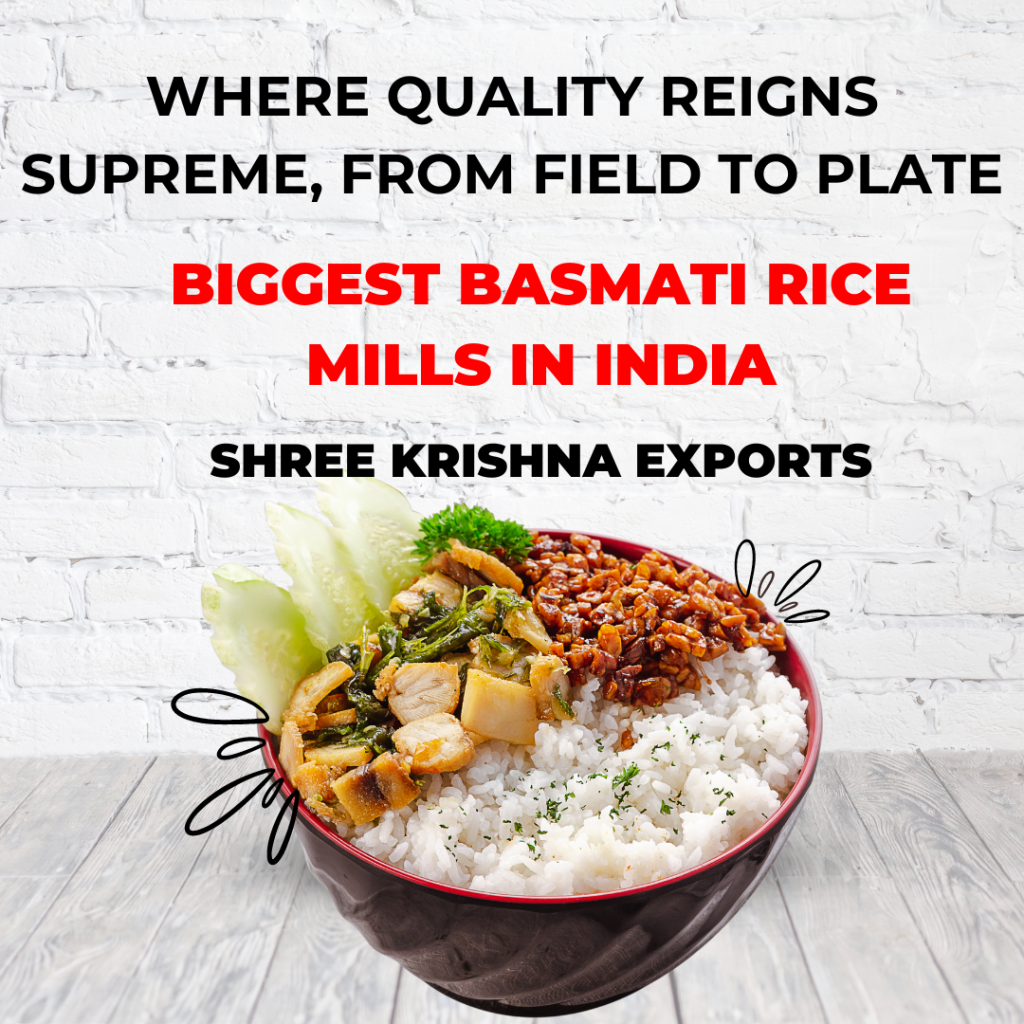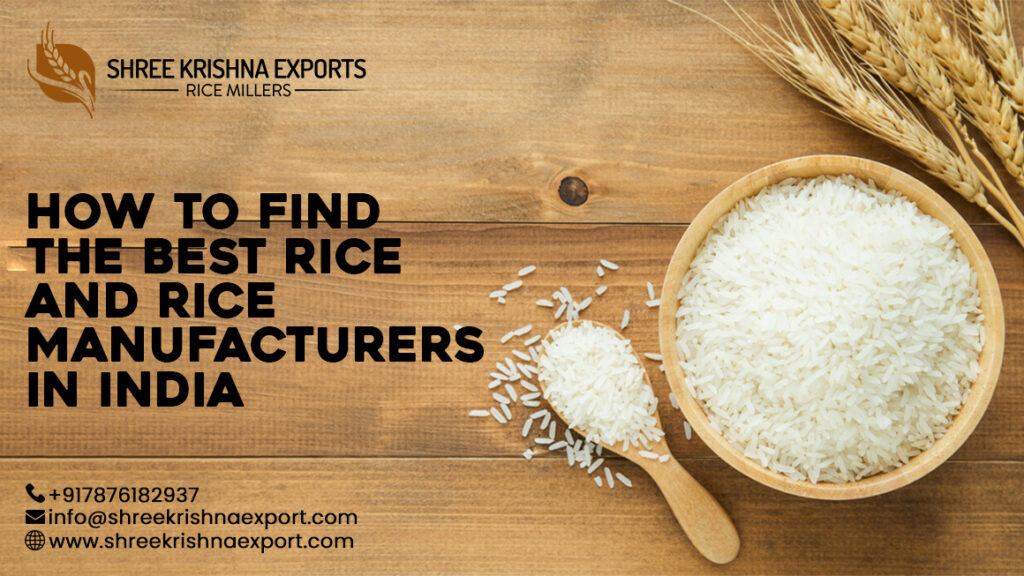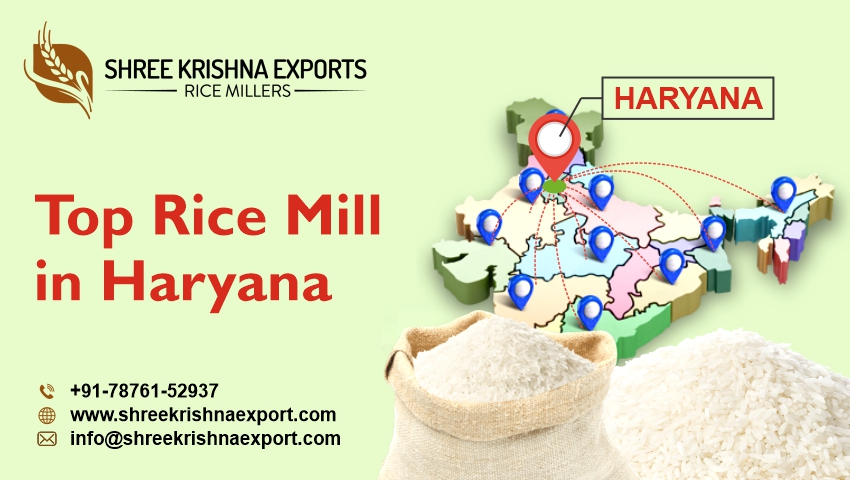The word basmati is derived from the Hindi word meaning fragrance or fragrant as basmati rice is not only famous for its texture but also its flavor and aroma. This kind of rice is traditionally grown only in countries like India, Pakistan, and Nepal. India is the leading producer of Basmati Rice as it produces nearly 70% of the total production of basmati rice in the world. Basmati rice is mainly consumed by the citizens of Pakistan and India.
What are the different types of Basmati rice?
As per the Seeds Act in 1996, at present, there are 29 varieties of basmati rice available in India and differentiated based on their properties, texture, flavor, appearance, and nutritional value. Here you will understand some of the most popular varieties of basmati rice manufactured by some of the biggest basmati rice mills in India.

• Pusa Basmati 1121– locally known as Muchal Basmat. This type of basmati rice’s main characteristic is long-grained rice with a tipping point. They are thin in form and soft when you taste them and are used for making biryani and Pilaf.
• Pusa Basmati 1– the main characteristic of this basmati rice is the grains are extra long with a pleasant aroma. When the grains get cooked they expand four times their actual size and are very easy to digest.
• Ranbir Basmati-this is one of the oldest varieties of basmati rice, mainly consumed by Dehradun, Jammu, and Kashmir. The grains are long with a pleasant taste and flavor.
• Basmati 386– the main characteristic of this long-grain basmati rice is that they double in their size when cooked. This is a premium quality basmati rice and is in huge demand in the market.
• Taraori Basmati– commonly known as Karnal. This rice is harvested and popularly sown in the Taraori region. This rice is the oldest basmati rice variety because it was first cultivated in 1933. Mainly used in Indian weddings or any festivities or social gathering events. The characteristics of this basmati rice are that it is long-grained, aromatic, flavourful, and heavy for the stomach.
• Basmati 217– this is the latest invention of basmati rice in India. The main characteristic of this rice is its extra long texture which doubles up when cooked, superfine, aroma, rich taste, highly in demand, and expensive.
Favorable conditions for sowing basmati rice
• Sown in direct sunlight in medium to highly-textured soil
• Weeds should be controlled
• Seeds should be sown with the help of a tractor which is equipped with a rice drill
• Crop pests like stem borers must be controlled as they are the main reason for rice crop damage and loss.
• Should be harvested as soon as they mature or become golden yellow.
Through this article, the readers will learn about one such basmati rice production mill named Shree Krishna Exports which is based in Samana Bahu Road in the village of Bairsal in the state of Haryana in India. The mention of basmati rice in India first started around the 1760s. We at Shree Krishna Exports provide best quality rice to our customers
FAQ’S
Q. What are the biggest basmati rice mills in India?
Ans. The biggest basmati rice mills in India are KRBL Limited, Dalmia Bharat Rice Mills, K.C.P. Group, Kohinoor Foods, India Gate Impex, LT Foods, Daawat Basmati, and Shree Krishna Exports.
Q. What are the factors that make a basmati rice mill successful?
Ans. A basmati rice mill’s performance is determined by the quality of the rice it produces, its capacity to fulfil consumer demand, its marketing and sales strategy, and its financial soundness.
Q. What are the different types of basmati rice?
Ans. Basmati rice is classified into two types: long grain and medium grain. The most common form is long grain basmati rice, which is distinguished by its long, thin grains and delicate aroma. Medium grain basmati rice is less prevalent, yet it is quite popular because of its nutty flavour.
Q. What are the different grades of basmati rice?
Ans. Basmati rice is classified based on its length, color, and aroma. Pukhraj basmati rice is the best quality and is distinguished by its long, thin grains, golden color, and rich scent. Basmati 1121 is the following grade, which is likewise recognised for its long, slender grains but has a somewhat lighter color and a milder aroma. Basmati 2 is the lowest grade of basmati rice, with shorter grains and a lower fragrance.
Q. What are the different ways to cook basmati rice?
Ans. Basmati rice can be cooked on the stovetop, in a rice cooker or in a pressure cooker. The best technique to cook basmati rice is determined by your own tastes as well as the type of rice you use.
Q. What are some of the health benefits of basmati rice?
Ans. Basmati rice is high in fibre, which can aid in digestion and enhance heart health. Basmati rice is also high in magnesium, which is essential for muscle and nerve function.
Q. What are some of the challenges facing the basmati rice industry in India?
Ans. The Indian basmati rice sector has several issues, including increased competition from other nations, growing production costs, and the need to upgrade infrastructure.
Q. What are some of the opportunities for the basmati rice industry in India?
Ans. The basmati rice business in India offers a variety of prospects, including rising international demand for basmati rice, rising popularity of basmati rice in India, and government backing for the industry.
Most Searched Keywords:
- Biggest Basmati Rice Mills In India
- Basmati Rice Mills in India
- Top Rice Mills in India
- Top Basmati Rice Mills in India
- Largest producer of basmati rice in India
- Rice companies in india
- Biggest Rice companies in India




